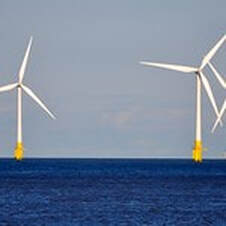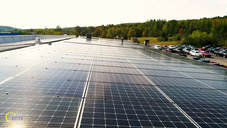 By Sarah Lozanova, Renewable Energy Writer The energy mix in the United States has shifted significantly in recent years. Wind and solar energy capacity has skyrocketed and continues on an upward trend. Wind energy generated 7% of the total electricity in the United States in 2019. Since 2008, the use of coal-fired power plants has declined, as the use of renewable energy and natural gas has increased. Wind energy is an excellent way to reduce carbon emissions, but what happens when the wind turbine blades wear out? Is there a looming waste disposal issue? Looming Waste Management Issues The design life of wind turbines is about 20 to 25 years. The longest wind turbine blade to date is 350 feet, almost the length of a football field. Although certain parts of wind turbines can be relatively easily recycled, others are not designed for recyclability. In particular, wind turbine blades present the biggest waste management challenge, but researchers from the National Renewable Energy Lab (NREL) in partnership with Arkema Inc. are making progress in this area.  By Sarah Lozanova, Clean Energy Writer Despite serving a valuable purpose to us all, tech companies have been criticized for years for their exorbitant energy consumption. Data centers are the backbone of the internet and keeping all that information just a click away requires a lot of electricity. A transition to renewable sources is underway, which cloud users can encourage by choosing their online service providers that source clean energy. The ‘Dirty Cloud’ Data centers use up to 3 percent of all U.S. electricity and the information technology sector is responsible for 7 percent of global electricity consumption. The term “dirty cloud” was even coined to refer to the coal and other high-emissions fuel sources that power cloud computing. Global internet traffic has tripled in the last four years and it is anticipated to triple again by 2022, according to the International Energy Association. The IT sector isn’t keeping up with its rapid growth,” says Gary Cook, the senior corporate campaigner on the Climate & Energy for Greenpeace. “More companies are making renewable energy commitments but energy demand growth by the industry is outstripping their renewable energy growth. This is an urgent issue to address the use of fossil fuels given the climate crisis.” Since 2009, Greenpeace has been putting pressure on some of the more polluting tech companies while praising greener ones. When examining the energy footprint of tech companies, some clearly lead the way in the corporate use of renewable energy deployment, energy transparency, advocacy, and energy efficiency innovations. Read More... Greening the Cloud with Renewable Energy |